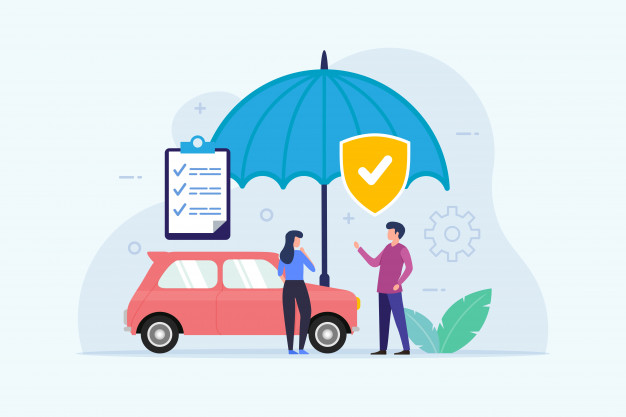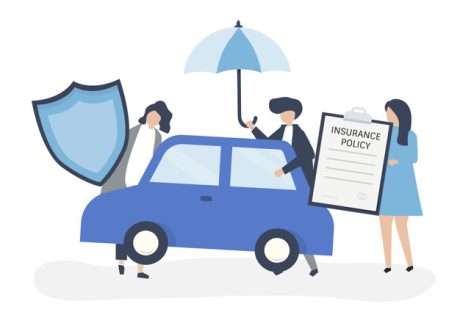As a responsible car owner, you must take the utmost care to ensure that you follow all traffic and safety rules. Wearing a seat belt, obeying the traffic laws, maintaining adequate distance between two vehicles, and driving within the speed limit are some of the safety measures. However, even if you follow all rules, there is always a fear of accidents because of numerous vehicles, reckless drivers, and other third-party issues.
An accident can cause significant damage to your vehicle, which may result in huge financial expenses. Hence, in such contingencies, an insurance policy for cars can provide much-needed financial aid. Moreover, it is mandatory to have car insurance in India. If you drive your car without an active car insurance policy, you will be charged a penalty or even imprisoned in certain cases.
Car insurance covers medical expenses, property damage, and even third parties. Compulsory third-party insurance covers the owner or driver of the vehicle against claims for personal injuries caused to other people in a road accident. Car owners can obtain a CTP green slip quote from a reputable insurance provider nearby or online in areas where this insurance is mandatory.
There are different kinds of insurance products available in the market. One of the most popular insurance policies is a cashless car insurance plan. A cashless policy can save you from spending hard cash while extending the requisite financial coverage.
Below is a detailed guide to cashless car insurance:
What is a cashless car insurance policy?
A cashless policy allows you to get your car repaired without making any cash payment. The expense of repairs is borne by the cashless car insurance policy, unlike a general insurance plan where you are liable to pay for expenses and then file for reimbursement. A cashless car insurance plan will include a network of garages where you can get your car fixed without paying any money. This is also inclusive of online 3rd party car insurance.
What does the cashless car insurance policy cover?
A cashless insurance cover allows you to get your car refurbished without paying any money. The payment is directly settled by the insurer and is included as a part of your insurance contract. However, the policy excludes deductibles and depreciation, which are explained below.
- Deductibles: It is the amount that you have to pay while raising a claim. For instance, if you are filing a claim of 20,000 and the deductible is Rs. 2,000. Then, the insurer shall make the payment of Rs. 8,000 subject to other terms and conditions.
There are two types of deductibles, compulsory and voluntary. Both are decided at the time of buying the policy. A compulsory deductible is mandatory, and you are required to pay your component of the final amount at the time of claim. Whereas, a voluntary deductible is what you agree to pay, in addition to the compulsory deductible.
- Depreciation: The value of an asset decreases over time due to the use, wear, and tear or obsolesce. Depreciation is the reduction in the value of the car or any of its parts. The insurer deducts the value of depreciation before releasing the payment. Depreciation is calculated according to the life of the asset at the rates listed by the Insurance Regulatory and Development Authority of India (IRDAI).
What is an authorized garage?
An authorized garage forms a part of a network of workshops that have entered into an agreement with the insurance company. Workshops meeting predetermined selection criteria get added to the list of the authorized workshops. They offer cashless repair services for insurance policyholders. The repairs are undertaken by trained mechanics who maintain transparency in the pricing. Moreover, the workshop issues the initial estimate of repair expenses, which is reasonably accurate.
What are the benefits of a cashless policy?
The key advantage of a cashless policy is that the insurance company settles the cost of damages directly with the authorized garage. You need not incur expenses before raising the claim. Hence, there is no financial stress to arrange funds for repair. A good insurance company will have a large network of authorized garages across the country, which further makes the cashless claim process smoother.
How to buy a cashless car insurance policy?
You can purchase a cashless plan by visiting the nearest branch office of your chosen insurance company. The documentation process is simple and quick, but you would need to go to the branch in-person.
Alternatively, you can buy insurance online. Online car insurance India brings in more transparency and convenience in the entire process. Moreover, in the current pandemic situation, the IRDA has abolished the need for submitting the documents or application form in hard copies. The insurer can share the policy document on your registered e-mail ID or mobile number, which shall be treated as a valid physical document.
Overall, given the number of rising accidents today, a comprehensive car insurance policy has become more of a necessity than a choice. If you fear the cumbersome claim process and want an easy way out, buy cashless car insurance online at the convenience of your home. The policy protects your vehicle and also assures your hassle-free settlement at all times.
Read Also:






















